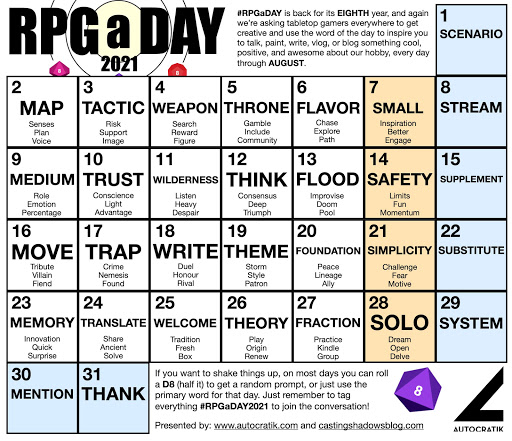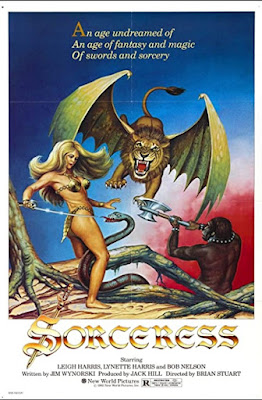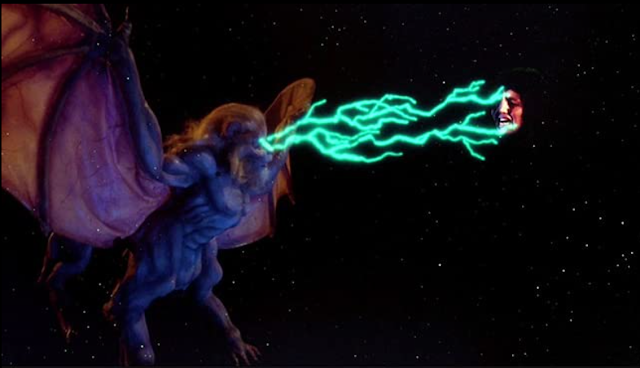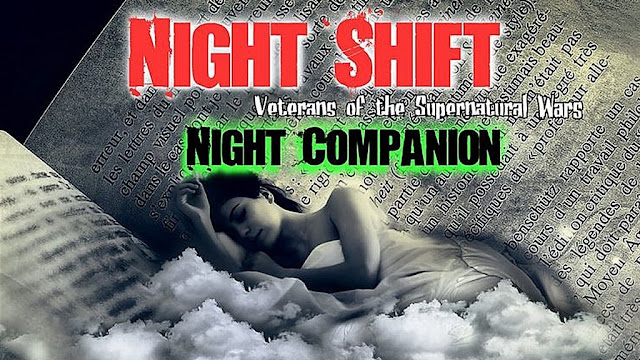Friday Fantasy: The Raven Stone
 MontiDots Ltd. is best known as a British Old School Renaissance publisher of scenarios steeped in British folklore, such as MD2 The Curse of Harken Hall: A MontiDots Adventure for early versions Fantasy Role-playing games and Limbus Infernum. The latest scenario designed for this general fantasy setting is The Raven Stone – A first level adventure of old school fantasy. This is an adventure designed for beginning characters using which uses Knights & Knaves’ OSRIC™ System (Old School Reference and Index Compilation), although with some alterations it can be used with the retroclone of the Referee’s choice. It takes the all but clichéd set-up of a village in peril and gives it a nice twist upon the other cliché of the rising dead. The set-up is fuelled by greed—not once, but twice, and will see the Player Characters dealing with the corpse cavalcade and tracing the cause back to its origins, a storyline which will see them protecting the village, dealing with the village ne’er-do-wells, either negotiating or combating a tribe of Kobolds, and ultimately exploring the dungeon below their tower home. Note that due to the extensive presence of the undead in the scenario, a Cleric is very much required when playing The Raven Stone.
MontiDots Ltd. is best known as a British Old School Renaissance publisher of scenarios steeped in British folklore, such as MD2 The Curse of Harken Hall: A MontiDots Adventure for early versions Fantasy Role-playing games and Limbus Infernum. The latest scenario designed for this general fantasy setting is The Raven Stone – A first level adventure of old school fantasy. This is an adventure designed for beginning characters using which uses Knights & Knaves’ OSRIC™ System (Old School Reference and Index Compilation), although with some alterations it can be used with the retroclone of the Referee’s choice. It takes the all but clichéd set-up of a village in peril and gives it a nice twist upon the other cliché of the rising dead. The set-up is fuelled by greed—not once, but twice, and will see the Player Characters dealing with the corpse cavalcade and tracing the cause back to its origins, a storyline which will see them protecting the village, dealing with the village ne’er-do-wells, either negotiating or combating a tribe of Kobolds, and ultimately exploring the dungeon below their tower home. Note that due to the extensive presence of the undead in the scenario, a Cleric is very much required when playing The Raven Stone.The Raven Stone is set in and around Siquanna Falls, a fishing village sat on the confluence of the Ure and Undine Rivers in a narrow, heavily wooded valley. It lies some two days’ travel from the nearest town and supports a nearby iron mine. A merchant caravan run by Muskan Ganto, regularly delivers a variety of trade, luxury, and special request goods to both the mine and the village, protected by hired mercenaries. The Player Characters are visiting Siquanna Falls—and one of them should ideally be a native who has returned home—when odd things begin to happen… First the Gurney brothers, whom the Siquanna Falls-born native Player Character will remember as a pair of lazy thieves and thugs from a family of lazy thieves and thugs, turn up at the local inn, The Laughing Carp, with luxury goods to sell. Second, Muskan Ganto is late in making his deliveries. Third, several corpses slither out of the lake and begin attacking the villagers, followed by corpses clawing their way out of the ground and attempting to escape the village cemetery. Could all of this be connected?
Initially, the Player Characters are asked by the innkeeper to find out what has happened to Muskan Ganto and then find out what is causing the dead to rise in the village. The starting point for the former is probably going to be to question the Gurney brothers, but the Player Characters are specifically told that they cannot use force and they cannot come to harm otherwise the authorities will act against them. This sets up a fun challenge for the players and their characters, but other means of getting out of the brothers are perfectly viable, whether that is through persuasion, intimidation, guile, or stealth. In fact, the Gurney brothers—or least the Gurney family—are likely to be grateful to the Player Characters when they come to their rescue as the dead seem to be flocking to their shack… Which of course begs the question, what is attracting the walking dead to them? It turns out to be an artefact that the brothers found (the Raven Stone of the title) and if the Player Characters take it—and the likelihood is that they will—it will begin attracting the undead to them. So, where did the artefact come from and why has it only begun working in the last twenty-four hours…?
Backtracking into the plot to The Raven Stone should eventually see the Player Characters find Muskan Ganto and his caravan, visit the iron mine, and eventually the Chimmekins, the local Kobold clan. The Player Characters are free to approach the Kobolds however they want, but they are told to be careful as the Kobolds can be dangerous, but in general they keep to themselves, not wanting to arouse the ire or attention of any local authorities. So the Player Characters can muscle in and attack the Kobolds if they want, but the Kobold king is willing to negotiate. He will allow the Player Characters to explore the dungeon below the tower where much of the clan lives and which has recently been beset by attacks by the undead.
The Raven Stone consists of two parts—the sandbox mystery above ground followed by the exploration of the Kobolds’ tower and the dungeon and below. Its strong plot hook should keep the players and their characters busy for multiple sessions, but the plotting is not as strong as it should be nor as easy to purvey to the players and their characters as it should be. The connections to the Gurney brothers and back to Muskan Ganto and his caravan are easy enough to follow, but the connection to the iron mine and then the Kobolds are not as obvious as they should be, and the Dungeon Master needs to take the time to go through the scenario and develop them herself. Perhaps by having Siquanna Falls’ two leading NPCs—the innkeeper and the local priest being ready sources of information should the Player Characters have questions, and definitely by preparing a briefing for the player whose character is native to the village about what he knows. The latter would certainly prime both player and character. In addition, this could include information and history about the immediate region, since once the Player Characters get into the dungeon, there is background information which will seem unrelated to either the plot or the region.
Except for the background to the region, there is a lot of detail given in The Raven Stone, from the descriptions of Siquanna Falls and the Gurney family home to the location of Muskan Ganto and his caravan and the Kobolds’ tower and dungeon. The latter two areas are very nicely described with a good amount of flavour and explanation, the dungeon itself divided between areas occupied by the Kobolds and those not. It should become clear that the dungeon was once an extension of the tower and that it was home to a ruling noble sometime in the past. This gives it the feel of a long-abandoned home rather than a random dungeon, so a stronger theme than it might otherwise have had. It is a pity that this aspect of the dungeon and tower is supported by background and history for the Player Characters to discover.
One issue with the dungeon and tower, and probably the scenario as a whole, is that it contains a lot of treasure, especially magical treasure, right up to an artefact that in essence is a mini-Deck of Many Things. The Dungeon Master may want to scale back some of the rewards to be found, especially if she does not want her Player Characters to become too powerful, too quickly. Another issue is that unless the Player Characters push to explore them, and in all likelihood anger the Kobolds in doing so, some of the areas of the dungeon and tower are out of bounds for the Player Characters, so that certain secrets may never be discovered. Only by being aggressive will the Player Characters be potentially rewarded, and perhaps it would have been appropriate for the scenario to have presented another way around this, especially after giving the option for the Kobolds to be open to negotiation earlier in the scenario. Lastly, the absolute need for a Cleric and the ability to turn undead—and potentially there are a lot of the undead, probably very attracted to the Player Characters later in the scenario—does suggest that The Raven Stone might be too challenging a scenario for First Level characters. Perhaps Second Level might be more appropriate, at least?
In addition to the dungeon, The Raven Stone includes an appendix describing the pantheon of gods used by MontiDots Ltd. and a guide to ‘Prentice Potions’, that is, potion brewing by Wizards who are less than Seventh Level. This requires a liquid known as Aqua Conjurum and if included, increases the versatility of the Wizard at lower Levels. Further, the scenario lists some house rules that the author uses for his campaigns and thus The Raven Stone. This includes polytheistic and dedicated Clerics, the turning of the undead, and starting spells for Magic-Users. Again, all to make both Classes more versatile at low Level.
Physically, The Raven Stone is nicely presented. Both the artwork and the cartography are as good as you would expect from MontiDots Ltd. It does feel cramped in places and does need a stronger edit in places.
The Raven Stone is a likeable scenario. The idea of the Player Characters getting hold of an artefact which attracts the undead and their not knowing what to do with it is a fun idea, and the fact that the scenario is driven by greed and foolishness rather than anything evil is refreshing—especially when it comes to the undead. Yet, the scenario is not as clearly developed as it could have been, leaving the Dungeon Master with more preparation than is really necessary. Overall, The Raven Stone is an entertainingly detailed and fun adventure—once the Dungeon Master has put a bit of work into it.























